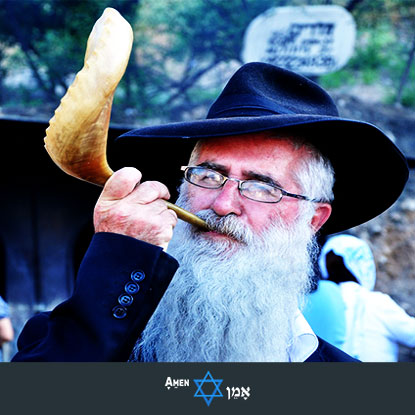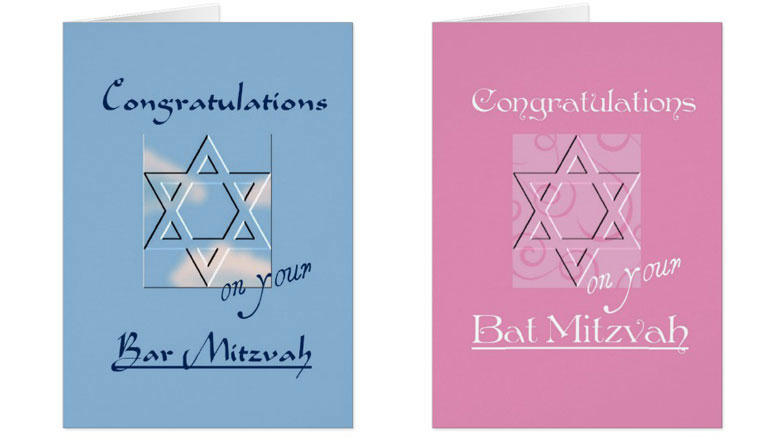Shofar Blowing: Why we Blow the Shofar on Rosh Hashanah & Yom Kippur (+ What it Really Means)

The Jewish Shofar isn’t a “regular” instrument…
Let’s just say – don’t expect to walk down the streets of Israel and see a Rabbi jamming with a Shofar.
That’s not what the Shofar is for…
So…
- …What is the Shofar for?
- …Why do we blow the Shofar?
- …When do you blow a Shofar? (spoiler: on Rosh Hashanah & Yom Kippur)
- … What does the Shofar symbolize? What does it really mean?
Excellent questions!
Ready?
Let’s explore…
What is a Shofar?

A Shofar is a Jewish trumpet-like instrument that is blown on Rosh Hashanah & Yom Kippur – the Jewish high holidays.
There are many types of Shofars – the most common one is made of a Ram’s horn (the one in the image above).
That’s the simple answer…
But like everything else in Judaism – there’s a simple answer, then there’s a deeper answer (and there’s an EVEN deeper answer).
Did You Know?
There are actually 4 levels of interpretation in the Torah (also called Pardes):
- Peshat (surface meaning)
- Remez (hidden meaning)
- Derash (inquiry)
- Sod (secret)
Yep… the rabbit hole is real (with all due respect to Alice).
When do we Blow the Shofar?
We blow the Shofar on two occasions:
1. Rosh Hashanah
The Shofar is blown during the Rosh Hashanah morning service after we read from the Torah and several other times during the Musaf prayer.
However – you can technically play the Shofar until the sun sets… so if you missed the Rosh Hashanah morning service at the synagogue – you can still play (or hear) the Shofar blast before sundown.
Did You Know?
Rosh Hashanah is also called “Yom Teruah” (the day of the Shofar blast), to highlight the importance of hearing the Shofar blasts on Rosh Hashanah.
The Mitzvah of the Shofar blast requires Jews to hear the Shofar blast twice – once on each day of Rosh Hashanah (unless Rosh Hashanah falls on Shabbat – in that case, you only need to hear it once).
2. Yom Kippur
On Yom Kippur, unlike Rosh Hashanah, we blow the Shofar only once – at the end of Yom Kippur (after the Neilah prayer).
The Shofar blowing on Yom Kippur marks the end of the fast.
The Meaning & Symbolism of the Shofar

If you go deeper down the rabbit hole – you discover the real meaning and symbolism of the Shofar. These are some of the hidden interpretations of the Shofar:
- The Shofar blast is a cry for spiritual awakening
Maimonides (Rabbi Moshe Ben Maimon) said that the crying sound of the Shofar represents a cry for spiritual awakening. It’s like a spiritual alarm clock designed to give our soul a wakeup call.
Note: I mean that quite literally. Did you ever hear a Shofar blast, up close, in person? Chances are it sent chills all the way down your spine.
The Shofar blast’s soul-penetrating sound is a reminder… a reminder to seek repentance. A reminder to NOT to get lost in the pursuit of material possessions and remember the important things in life.
- The Shofar marks the beginning of the days of repentance – the 10 days between Rosh Hashanah & Yom Kippur.
According to Maimonides, during the 10 days of repentance (the high holy days) every person has the ability to influence his own personal balance of sins and merits, as well as the rest of the world.
- The Shofar blast serves as a reminder for us to do Teshuva
The Jewish high holy days give us a unique window of opportunities (that lasts 10 days) where doing Teshuva carries significantly more weight than any other time during the year.
- It reminds us of our commitment to G-d, and G-d commitment to us
We blow the Shofar on Rosh Hashanah – the Jewish new year, just like it was first blown when we received the Torah on Mt. Sinai. Just like we stood before G-d on Mt. Sinai and accepted the Torah as our guide, we now stand before G-d on the beginning of the Jewish new year.
- It represents our cry for the arrival of Mashiach
In a way, it’s a “cry for help”. We cry that he arrives soon and reunites the Jewish people from around the world.
The Jewish Shofar carries a special significance for the future: It is said that when the Mashiach comes, he will be welcomed by the sound of the Shofar.
- We cry over the destruction of the holy temple and hope that it will be reconstructed soon
The cry of the Shofar reminds us of the devastating destruction
- It symbolizes Techiyat Hametim – the revival of the dead
We pray and hope for the day our (deceased) loved ones are resurrected and we reunite with them.
- The cry of the Shofar reminds us to the cry of the prophets who warned us to correct course across history
We’re reminded of all the times we deviated from the right/righteous path and suffered as a result.
- The Ram’s horn (the most common Shofar type) represents the binding of Isaac (Akedah).
It reminds us of the Ram that G-d sent Abraham to sacrifice instead of his son, Isaac.
- The Shofar blast serves as a reminder to constantly improve ourselves
Shofar in Hebrew is spelled “שופר”, the same letters as the word “שפרו”, which means improve thyself.
Remember: Hearing the sound of the Shofar blast is a Jewish Mitzvah (commandment): every adult Jewish man is obligated to hear the sound of the Shofar on Rosh Hashanah & Yom Kippur (women and kids aren’t technically required to hear the Shofar, but it’s recommended that they do).
The Sounds of the Shofar
The Shofar blast is made of 4 sounds:
1. Tekiah – One long Shofar blast
The Tekiah represents our strong belief and our unshaken trust in God, the creator of the world. We hope to set ourselves straight and align ourselves with the sound of the Tekiah.
On Rosh Hashanah, we acknowledge G-d’s power and crown him as our king – a king that looks after his people. We appreciate what God has given us and that he guides us through the hardships and the blessings.
Shevarim – 3 medium, crying blasts
The crying Shevarim blast reminds us of our misconducts in the past year, and the sorrow it has caused us. The crying sound is not just a sign of grief. Rather, It’s a cry for hope… our hope to meet fulfill our potential next year, and not repeat our mistakes from the last year.
The Kabbalah says that the three wailing blasts represent the sobbing cry of a Jewish heart. A heart that yearns to grow, correct his sins and connect to his creator.
Teruah – 9 short blasts
The Teruah consists of 9 small blasts played one after the other. This unique sound resembles an alarm clock designed to give us a spiritual wake-up call… a wake-up call reminding us to atone for our sins and do Teshuva.
Tekiah Gedolah – the final (longer) Tekiah
The Tekiah Gedolah is longer than the earlier Tekiah. The extended Tekiah blast symbolizes our final cry for atonement and forgiveness for our sins. It’s the sound that concludes each set of Shofar blasts.
Conclusion
The Shofar carries a lot of meaning in Judaism. Its alarming sound is reserved for special occasions in the Jewish tradition, history, and future.
It’s crying sound reminds us to evaluate the important things in life, and give us a spiritual wake-up call to return to our correct ways.
Speaking of waking up… it’s night time now… I’m going to bed 🙂



I heard two loud blasts a couple nights ago, what sounded to be a Shofar horn. I was specifically praying for forgiveness and for G-d to visit me. I fell asleep. The first blast, I thought “Wow, what an entrance!” I was staring at the ceiling, no more sounds, so I fell asleep, uncertain if I dreamt the loud blast. Then as soon as I was about to fall asleep, ANOTHER blast woke me up! I kept silently screaming, “WAKE UP, WAKE UP, WAKE UP!” I couldn’t move and I was astounded by what occurred after my prayer. I’m a Christian and knew nothing of the shofar, nothing remotely connecting, but the answers on this site about hearing it, is no joke. I was praying to be closer to G-d *granted*. Christians do not talk about the shofar and its meaning. I’m glad to have find this reference, validating G-d got my number… Thanks!
A concise and informative article that all can understand.
Thanks Sandy!